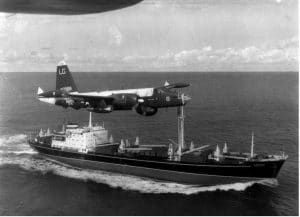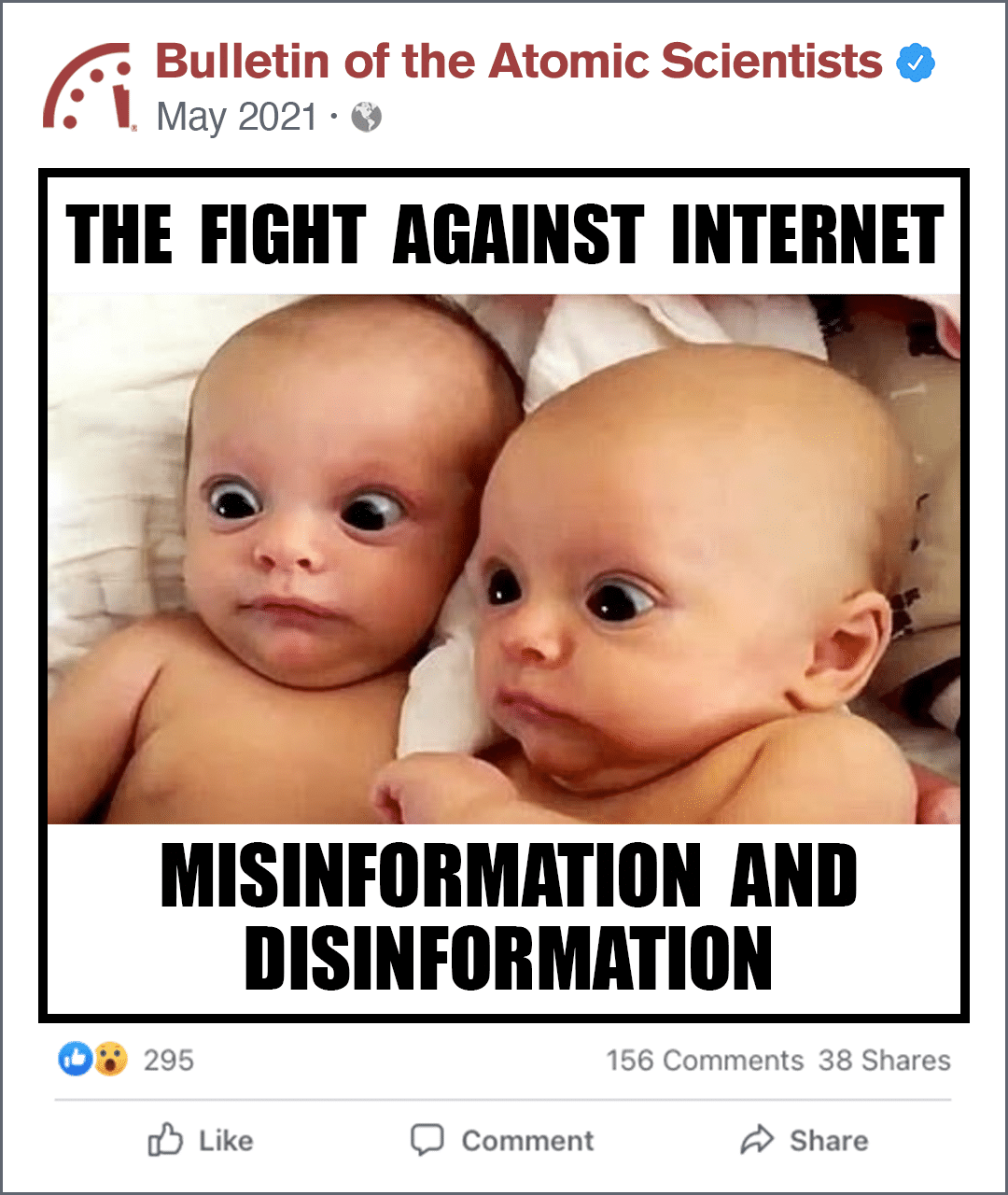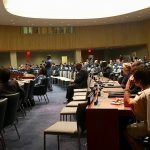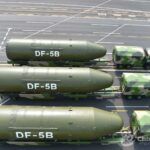Avoiding an unintentional space war: Lessons from Cold War nuclear diplomacy
By Maxwell Simon, Sam Wilson | May 13, 2021
Avoiding an unintentional space war: Lessons from Cold War nuclear diplomacy
By Maxwell Simon, Sam Wilson | May 13, 2021
In July of 2020, senior US and Russian officials held talks about space security and strategic stability, the first such talks between the two countries dedicated to these issues in seven years. The meetings came at a time when the domain of space has been becoming increasingly tense: Just a few weeks earlier, the US Space Command reported that Russia had tested a space-based weapon (US Space Command Public Affairs 2020a); almost a year earlier, the US Director of National Intelligence had reported that Russia and China were fielding new weapons that could put US space capabilities at risk (Coats 2019).s
Tensions have not eased since then, and in December 2020, the US Space Command reported that Russia had tested as direct ascent anti-satellite weapon, its second such test of 2020 (US Space Commands Public Affairs 2020b). Meanwhile, both countries are blaming the other for weaponizing space.
Space is becoming more contested, and the risk exists that a conflict in space could arise or escalate inadvertently, perhaps out of miscalculation. As outer space competition between the United States and its rivals heats up, these countries would benefit from considering a model from a previous era, albeit for a different domain.
During the Cold War, there were similar concerns about unintentional escalation and conflict—focused on nuclear weapons. Stemming from worries that a nuclear war could inadvertently be started—a war that would impose unacceptable costs to both sides—the United States and the Soviet Union adopted risk-reduction measures to help prevent nuclear crises. Consequently, the nuclear domain has benefited from a long history of thinking about nuclear deterrence and stability, and the resulting body of diplomacy regarding the reduction of nuclear risk may offer helpful lessons, or at least starting points, for doing something similar for space. (See figure 1.)
The diplomacy that began in the early-1980s is perhaps the most applicable; then like now, great power relations were marked by hostility and suspicion. Then, President Reagan famously framed the Soviet Union as the so-called “Evil Empire” but still sought diplomatic means to avoid a crisis that could inflict unimaginable consequences. Similarly today, Moscow’s behavior in space should not prevent the United States from prioritizing diplomacy; just like the 1980s, the United States can acknowledge Russia’s actions for what they are while still pursuing sustained dialogues. These could begin bilaterally, given that Russia and the United States have a long history of conducting talks along these lines, and eventually expand to include China and other major space powers.
A nuclear-space comparison is fruitful because many of the same dynamics that created instability in the nuclear realm also apply to space. Similar to a nuclear war, we have limited information about what a war in space would look like; despite occasional “gray zone” hostilities—actions below the threshold of what would generate a powerful response—a war in space has never happened (Hicks et al. 2019). Consequently, countries have little experience to draw upon to predict which behaviors would motivate threatening actions by a potential competitor, and how quickly and in what manner those actions could escalate.
Two themes from 1980s nuclear risk-reduction diplomacy offer potential applications to the space domain: (1) a focus on continued dialogue about perceptions of appropriate and inappropriate behavior, and (2) the creation of mechanisms to enhance crisis communications and information exchange. This history suggests that the United States and its competitors should engage in more consistent senior-level dialogues about appropriate behavior in space, and that they should promote the creation of operator-to-operator communication links with their counterparts in Russia. To give one example of such a link from even earlier in the Cold War: After the United State and the Soviet Union came close to nuclear war during the Cuban Missile Crisis of 1962, it was felt that rapid, high-level dialogue would have greatly defused tensions. A few months later, a 24-hour secure communications link known as the “Hotline” was installed directly between the National Military Command Center in the Pentagon and the Kremlin, to facilitate communication between Kennedy and Khrushchev through a teletype machine—the mid-20th century equivalent of email, if a bit cruder. (See figure 2).

Delineating appropriate and inappropriate behavior.
One lesson of Cold War diplomacy is the important role of greater transparency and predictability in military activities and clearly defining what is appropriate—as well as threatening or hostile—behavior.
Beginning in earnest in 1984 following the breakdown of INF and START negotiations, the United States and the Soviet Union engaged in sustained discussions about what each side deemed appropriate and inappropriate activity—such as threatening behaviors, scenarios of potential escalation, and mechanisms that might be put in place to minimize misperception, miscalculation, and inadvertent escalation.
Concerns that military exercises and large maneuvers might drive miscalculation yielded the Stockholm Document of 1986. A multilateral political commitment between NATO, nonaligned countries, and the Warsaw Pact, this document acknowledged that unannounced military exercises and maneuvers could be perceived as hostile, and committed all the states party to it to provide advance notice of military activities with more information about those activities (Organization for Security and Co-operation of Europe 1986).
Fears that ambiguous missile test launches could drive misinterpretation and lead to rapid, inadvertent escalation led to 1988’s Agreement on the Notification of Launches of Intercontinental Ballistic Missiles and Submarine-launched Ballistic Missiles, which required both sides to provide advanced notice and detailed information as to their ballistic missile launches (Bureau of Arms Control, Verification, and Compliance 1988).
The Prevention of Dangerous Military Activities Agreement of 1989 addressed the possibility that the United States or the Soviet Union might cross the other’s red lines unintentionally. To avoid this problem, the agreement defined what it called “dangerous military activities” and identified shared protocols for notifying if one’s behavior crossed a red line.
Applications to space.
Potentially just as valuable as the substance of these agreements was the process that brought them about and the mutual learning it enabled. Both sides engaged in sustained dialogue over the course of several years, shared perceptions of justifiable behavior, acknowledged activities that could be destabilizing, and distinguished between more routine military maneuvers and those that could be perceived as having more hostile intent. In doing so, each party gained a better understanding of how the other side might perceive its behavior, which improved mutual understanding and reduced the likelihood of misperception in a potential crisis.
Given the benefits of such an approach during the Cold War, the United States and Russia today should engage in continued dialogue in the space domain about which actions each considers to be appropriate or nefarious, and what might constitute crossing unacceptable thresholds. Such space-dedicated talks used to occur with regularity between the United States and Russia, but broke down in the fallout of Russia’s 2014 invasion of Crimea. The seriousness of the problem, and the mutual advantages that come from access to space, make it appropriate to resume such talks—and perhaps include other space powers, over time. Such efforts would enhance transparency and predictability, as was the case for NATO and Warsaw Pact countries in the Cold War.
The main contours of the 1980s discussions that yielded these Cold War-era agreements suggest the general questions that US policymakers and their counterparts in Russia might consider in outer space: What types of behaviors can everyone agree upon that might be perceived as threatening if not accompanied by advance notification? What behavior is so threatening that it should be prohibited no matter what? What protocols can be put in place to better understand activities that are currently in the gray zone? How will it be interpreted if a state chooses not to notify others of a given maneuver, and how does that differ across the range of potential maneuvers? Given the speed with which objects travel in orbit, anything in space can act a weapon; therefore, discriminating appropriate from threatening behaviors is extremely important.
For example, is it acceptable if one satellite maneuvers into an orbit that regularly brings it into close proximity with another satellite? What if one satellite maneuvers into a nearly identical orbit as a separate satellite—would the country with the maneuvering satellite need to inform the other country? Is it acceptable if there is a slight but suspicious difference between the announced orbit and the actual orbit—if a country announces a satellite will be in one orbit but it ends up in another?? What if a country puts an unreported satellite in orbit, framing it as debris? And if the satellite in question is owned by a private enterprise, then who is responsible?
As Frank Rose recently wrote: “It’s very difficult to call out bad behavior if you don’t define it” (Rose 2018). Being able to call it out would be good—but having a shared understanding of what is considered to be bad behavior might be even better. This is particularly true in the increasingly congested realm of space, where the same type of maneuver could be a pretext for benign or hostile activity. The United States should engage more with its space competitors about what constitutes appropriate activity and what crosses red lines in space. Such conversations could generate more predictability about what actions could elicit threatening responses—and that sense of sureness and predictability would lessen the likelihood of conflict.
Create more crisis communication channels.
A second conclusion from Cold War-era diplomacy is the value of enhanced crisis communication lines between the United States and its competitors to lower the likelihood of miscommunication, miscalculation, and inadvertent escalation.
Two relevant developments from the 1980s were the upgrade of the US-Soviet Direct Communication Link, and efforts to develop more comprehensive crisis communication lines— including the Nuclear Risk Reduction Centers, and the Joint Military Communication Link. These innovative proposals could provide us with important models for crisis communication channels in outer space today. Then as now, in environments of great suspicion and hostility, more robust and standardized communication links are an important mechanism to increase transparency and lower the likelihood of escalation caused by misperception and miscalculation.
The first major initiative to enhance communications was the upgraded US-Soviet Direct Communication Link—the same Hotline whose origins began with the Cuban Missile Crisis of the 1960s. By 1982, US leaders began to get particularly concerned that the use of nuclear weapons could occur by mistake, arising from accidents and confusion rather than deliberate escalation. Echoing President Reagan’s worry of “…the chance of war arising out of uncertainty or miscalculation…” (Reagan 1981), the Defense Department released its Weinberger Report in April 1983. Its key takeaway was that timely and accurate communication during crisis was the best way to prevent unintended conflict (Borawski 1986). The report advocated that the Hotline be upgraded with high-speed facsimile equipment to transmit full pages of text, maps, graphs, and pictures simultaneously with shorter, printed messages over the teletype. The upgrade, officially implemented in 1984, significantly increased the amount of direct and rapid communications—and the variety of information—that could be exchanged between the two countries during a time of crisis (Installation and Operation of the Direct Communications Link 1985).
A second recommendation from the Weinberger Report urged both sides to establish a “Joint Military Communication Link” to supplement the Hotline by exchanging more detailed military and political information than would normally be made through heads of state (Rusten 1984). Though this proposal never came to fruition, its goal was to enable officials in the military command centers of the United States and Soviet Union to share technical information more rapidly, without requiring information to pass all the way up the chain of command before being transmitted.
An even more robust communication proposal was based on the model of the nuclear risk reduction centers. Following the Weinberger report, some observers in the United States were concerned that the recommendations did not go far enough, and, in November 1983, Senate leaders proposed the establishment of “nuclear risk reduction centers,” meant to take on a more expansive crisis management and information-sharing role. They wrote that the United States and Soviet Union could better avoid misinterpretations “through more comprehensive arrangements involving the designation of particular representatives and facilities in both nations that would be assigned specific responsibilities for preventing nuclear crisis” (Nunn-Warner Working Group 1983, 134).
William Ury, then-director of the Harvard University Nuclear Negotiation Project, described the centers by comparing them to a hospital emergency room, suggesting that they would provide a centralized “place and resources to enable the principals to deal with a critical situation as effectively and expeditiously as possible” (Ury 1985). A key understanding seemed to be that the centers could begin with the more modest mandate of being a channel to exchange notifications and other information associated with routine military activities, and eventually evolve to a more robust crisis management capacity (Reagan 1985).
Reagan and Gorbachev signed an agreement establishing the Nuclear Risk Reduction Centers in Washington and Moscow on September 15, 1987. The Centers have not taken on the expansive role their advocates had hoped for, but have nonetheless played an important role as 24-hour watch centers, and as a tool for timely and accurate information exchange required by 14 different arms control and security-building measures—including New START, Open Skies, the Chemical Weapons Convention, and the Conventional and Armed Forces in Europe Treaty, as well as US-Russia cyber-related confidence-building measures (United States Nuclear Risk Reduction Center 2013).
These communication channel proposals are potentially relevant for the domain of outer space, where there is little communication at the operator-to-operator level—something that would greatly aid in crisis management during periods of greater tension in space (Ford 2020). Lines of communication between the US Combined Space Operations Center and its Russian equivalent could help prevent an innocent miscalculation leading to a conflict in space. If the combined space operations center detects something else that seems threatening—such as several satellite maneuvers from a country occurring at the same time—they may not know whether to treat the activities as hostile. Any mechanism that promotes the exchange of more timely information could play a meaningful role in enhancing mutual understanding, ultimately promoting greater space stability. (See figure 3.)
<<INSERT HERE FIG. 3, “GALILEO SATELLITE”>>
Looking Ahead.
Space-based applications are vital for agriculture, communications, weather forecasting, precision strike targeting, intelligence, and nuclear command, control, and communications (Wilson et al. 2020). If a war broke out in space and it became nearly unusable due to massive debris fields, everyone stands to lose a great deal.
Accordingly, the United States and Russia should seek to undertake simple measures to prevent a war from happening in space inadvertently, just as they have in the nuclear domain. The meeting between US and Russian senior officials last year was a great step, as Mikhail Ulyanov, Russia’s permanent representative to the United Nations in Vienna, reflected following the talks. “I remember not a single instance over the past 10 years when the Russian-US consultations had been so lengthy, and with such an intensive and substantive agenda,” he said (Nakamura 2020). But the two countries could go further, advancing senior-level discussions about appropriate behavior in space and creating more communications channels in times of crisis. Over time, these talks could also expand to include China and other major space powers.
While much of the strategic thinking about national security in the United States has focused on China recently, the opportunity to build on the substantial Cold War history of US-Soviet confidence-building measures argues for focusing first on Russia.
At present, the United States and Russia appear to be at a standstill, with each side highlighting the other’s development and testing of space weapons. Indeed, Russian officials argue that the United States and NATO are trying to turn space “into a combat zone and battleground” (Sputnik News 2020). Against this backdrop, US-Russia discussions in Vienna on space security offer the United States a valuable opportunity—a starting point for a renewed and sustained exchange with Russia, and toward the development of active operator-level communication channels, each of which has the potential to reduce uncertainty and enhance crisis stability in outer space.
The history of the Cold War shows that the diplomatic process and the mutual learning it facilitates can be just as valuable as the agreements themselves. It demonstrates the value of championing open dialogue, even in an environment of great suspicion. While prospects for genuine progress on space security issues may seem low today, the same can be said of US perceptions of Soviet sincerity in the early 1980s before Gorbachev’s ascension and as arms control negotiations faltered. Despite these obstacles, Cold War negotiators were able to make meaningful progress on confidence-building measures in the absence of traditional arms control. So too could dialogue be fruitful on space security issues today.
Together, we make the world safer.
The Bulletin elevates expert voices above the noise. But as an independent nonprofit organization, our operations depend on the support of readers like you. Help us continue to deliver quality journalism that holds leaders accountable. Your support of our work at any level is important. In return, we promise our coverage will be understandable, influential, vigilant, solution-oriented, and fair-minded. Together we can make a difference.
Keywords: Cold War, Space Command, escalation, nuclear diplomacy, space-based weapons
Topics: Nuclear Weapons, Special Topics





















